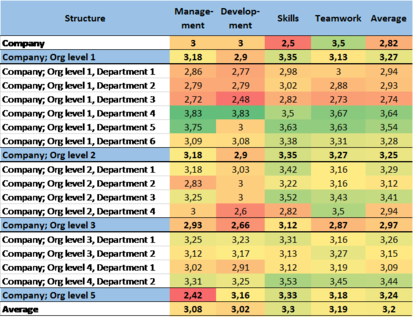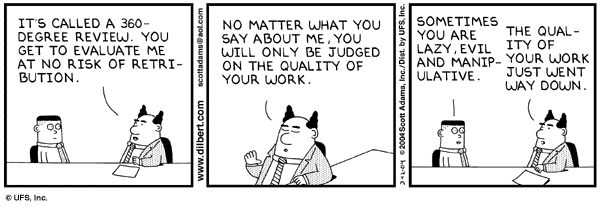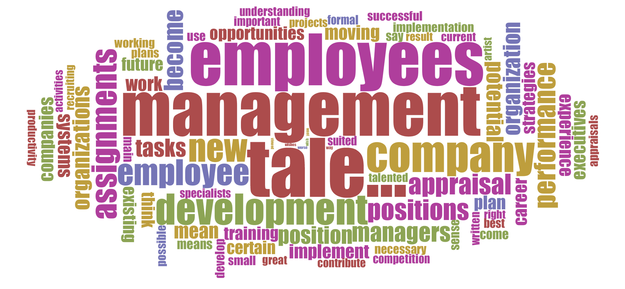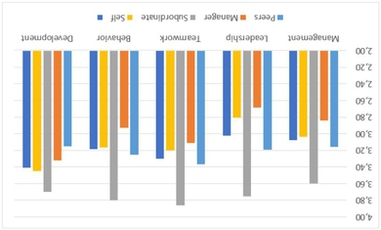The personnel evaluation and feedback surveys help make decisions on a person level – who to lay off or promote – and on the general level – how and in which areas to develop the employees of the organization.
Collecting feedback helps develop people on a personal level but in the whole organization it sheds light on problems or strengths of units or job families (professional groups). Getting the necessary information for strategic decisions presumes collecting the adequate amount of feedback and one option is 360-degree feedback.
As a result it is possible to decide on the sufficiency of necessary competencies and problematic units and get input for making changes.

Some of our clients say: “Thanks to the 360-degree feedback I as a manager have something to talk about with employees. Performance reviews and salary negotiations are focused and are based on realistic data”.
360-degree evaluation or feedback is a well-known and used method in HR. It is also called multi-source evaluation, round-evaluation or group performance analysis.

The reason for using this method is the
need to collect feedback on one person from more than one source (direct
manager). The method is ideal for organizations where employees work tightly
with colleagues and other departments. The method assumes that a larger amount
of feedback providers provide a more objective evaluation result.
The usual respondents in addition the person himself are managers, colleagues, subordinates, peers (persons doing a similar/comparable job in the same organization) and external cooperation partners or clients. The personal work related contact between the respondent and the person being evaluated is important. The method was initially used for managers but today it is suitable for different situations. The organization can use the method differently. It is also important to answer questions when, how and what do we plan to accomplish with this method?
When to use 360-degree feedback?
- Evaluation of probation results
and suitability
- Evaluation before promotion
- Evaluation regarding training
or development programs
- Feedback before performance
review or with reference to the latter
- Project or event based
evaluation
The “When” question can also be interpreted whether the organization carries out the surveys as a one-time project or it is done continuously, e.g. in order to integrate an organization’s values and culture it is important that enough surveys are rolled out constantly – this helps to formulate the attitude of respondents and reminds them of organization’s values.
Different methods exist to determine the
content of the questions. The choice often depends on which other feedback or
evaluation forms are used in the organization. E.g. some questions may be
answered via employee satisfaction survey or performance reviews and there is
no point of adding them to the 360-degree feedback survey.
What to evaluate and what do provide feedback on?
- professional competencies
- value based behavior
- skills necessary for work
- effort, dedication and ability
to learn
Ensuring the analyzability is the main question in regards to evaluating employees. Analyzing the numbers is more straightforward, it is also possible to automate text analysis. Nevertheless, analyzing numbers is easier and more convenient. In order to fulfill this task it is necessary to clarify from the very beginning what and how will be compared. Evaluations including numerical scales is a must. It is also important to set up an optimal number of questions to guarantee the maximum number of responses. You should also consider which questions need additional explanations and where it is not necessary.
Text analysis may provide irreplaceable value to individuals and organizations. In case of positive results the text part of the answers can be motivating both for the individual and the whole organization. The collected materials can be used for employer branding, recruitment and internal/external communication when making generalizations.
Starting a 360-degree feedback survey using a specifically adjusted platform is fast and simple. Additional consultation may come in handy if creating a feedback model which is in compliance with the organization’s strategic goals. Management problems and feedback goals are determined in these models and different themes are then allocated between feedback inputs which may differ greatly.

CEO, consultant
Read more:
Statistics views in HR surveys




 -->
-->




